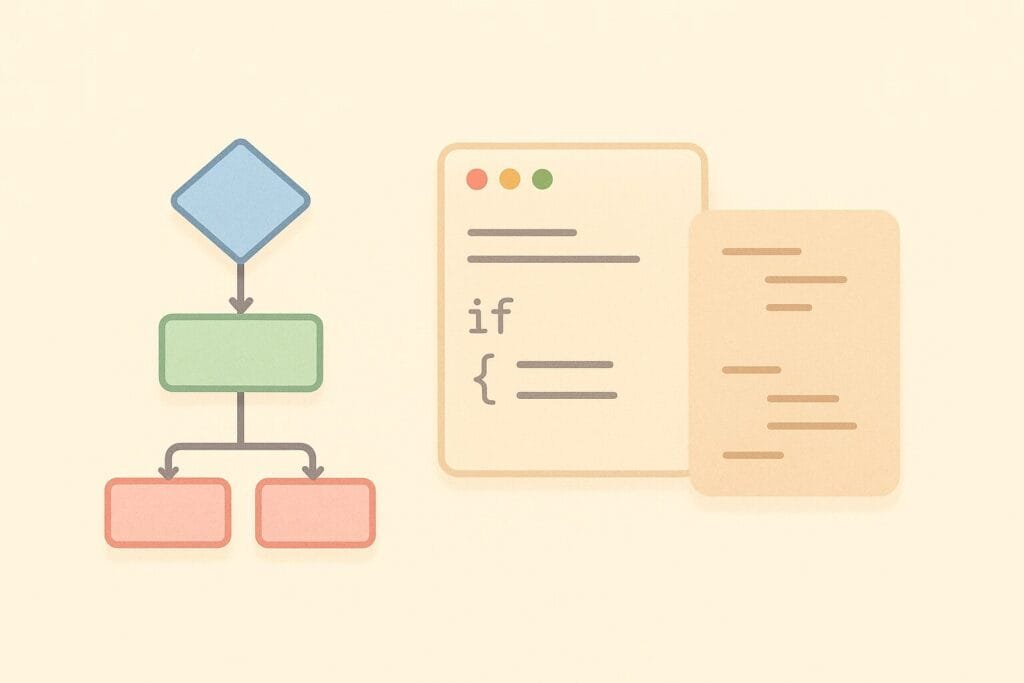The if-else statement is one of the most essential parts of programming logic. It helps developers make decisions within their code, depending on certain conditions. For beginners learning Python, mastering real-life if-else practice problems is crucial to building a strong foundation in problem-solving and logical thinking. In this article, we will cover real-life examples of if-else statements, provide complete Python code samples, and explain each use case step by step.

Why Practice If-Else Problems?
Practicing real-life if-else problems allows programmers to understand how conditional statements work in everyday situations. Whether it is checking age, validating passwords, or calculating discounts, conditions play a big role in coding logic. By solving these examples, you will improve your ability to translate real-world problems into programming solutions.
1. Check Voting Eligibility
A classic example of using if-else in real life is checking whether someone is eligible to vote based on their age.
age = int(input("Enter your age: "))
if age >= 18:
print("You are eligible to vote.")
else:
print("You are not eligible to vote.")
Use case: If the user enters 20, the program outputs “You are eligible to vote.” If the user enters 16, it outputs “You are not eligible to vote.”
2. Grade Evaluation System
Another common real-life if-else problem is evaluating student grades based on marks.
marks = int(input("Enter your marks: "))
if marks >= 90:
print("Grade: A")
elif marks >= 75:
print("Grade: B")
elif marks >= 60:
print("Grade: C")
else:
print("Grade: F")
Use case: If a student scores 82, the output is “Grade: B.”
3. Odd or Even Number Check
This is one of the most basic but real-life useful problems, especially in scenarios like ticket distribution or dividing groups evenly.
num = int(input("Enter a number: "))
if num % 2 == 0:
print("The number is even.")
else:
print("The number is odd.")
Use case: If the user enters 7, it will print “The number is odd.”
4. Login Authentication System
If-else statements are also used in real applications like login systems. Let’s simulate a simple authentication.
username = input("Enter username: ")
password = input("Enter password: ")
if username == "admin" and password == "12345":
print("Login successful!")
else:
print("Invalid credentials.")
Use case: If the user types admin and 12345, they log in successfully. Otherwise, access is denied.
5. Traffic Light Simulation
Traffic control is a great real-life scenario where if-else can be applied.
light = input("Enter traffic light color (red/yellow/green): ")
if light == "red":
print("Stop! Wait for the green signal.")
elif light == "yellow":
print("Slow down, be ready to stop.")
elif light == "green":
print("Go ahead!")
else:
print("Invalid input.")
Use case: If the input is “red”, the program instructs the user to stop.
6. Temperature-Based Clothing Suggestion
We can also solve everyday life decisions like choosing what to wear based on the weather.
temperature = int(input("Enter the temperature in Celsius: "))
if temperature >= 30:
print("It's hot! Wear light clothes.")
elif temperature >= 20:
print("The weather is nice. A t-shirt is enough.")
elif temperature >= 10:
print("It's a bit cold. Wear a jacket.")
else:
print("It's freezing! Wear a coat and stay warm.")
Use case: If the user inputs 8, the program will recommend wearing a coat.
7. ATM Withdrawal Limit Check
In banking systems, if-else is used to check withdrawal limits and balance.
balance = 5000
withdraw = int(input("Enter withdrawal amount: "))
if withdraw <= balance:
balance -= withdraw
print(f"Withdrawal successful! Remaining balance: {balance}")
else:
print("Insufficient balance.")
Use case: If the withdrawal is 2000, the program shows the updated balance of 3000.
8. Discount Calculation
Stores and e-commerce websites use if-else to calculate discounts based on purchase amount.
amount = int(input("Enter purchase amount: "))
if amount >= 1000:
discount = amount * 0.2
elif amount >= 500:
discount = amount * 0.1
else:
discount = 0
print(f"Discount: {discount}, Final Price: {amount - discount}")
Use case: If the user spends 1200, they receive a 20% discount.
Conclusion
These real-life if-else practice problems are perfect for beginners who want to sharpen their Python skills. By practicing voting eligibility checks, grade evaluations, login systems, ATM simulations, and more, you not only improve coding skills but also learn to apply programming in daily life. Keep practicing with different scenarios and you’ll quickly master conditional statements in Python.
For more structured Python learning, check out this external guide on Python conditions and if statements.

